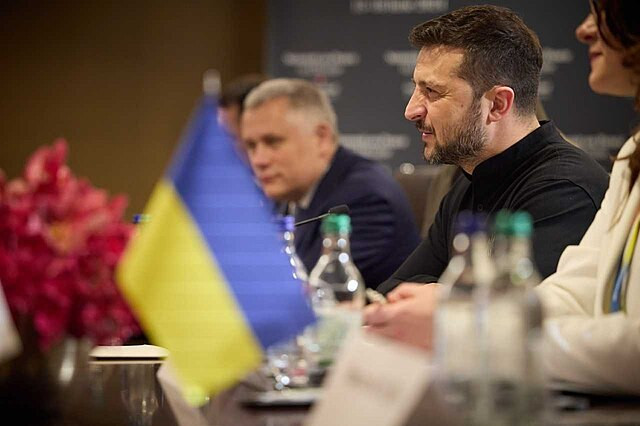Ukraine's recent incursion into Russia's Kursk region marks a significant and risky escalation in the ongoing conflict, as Kyiv's forces push deep into enemy territory. The operation, which began over a week ago, has already led to the capture of over 1,000 square kilometers (386 square miles) of Russian territory, including 74 settlements, and the taking of hundreds of Russian prisoners of war. This bold move by Ukrainian forces has altered the dynamics of the battlefield, presenting both new opportunities and significant risks.
President Volodymyr Zelenskyy broke his silence on the operation after initial successes, outlining Kyiv's daily advances to a war-weary Ukrainian public. By Wednesday, Ukrainian forces had reportedly made further gains, advancing 1-2 kilometers and capturing additional Russian soldiers. The scale and speed of the operation have surprised many, including Russia's military command, which has yet to mount a robust response.
The incursion into Kursk is notable not only for its military implications but also for its political and psychological impact. The operation has challenged the perceived invincibility of Russia's defenses, exposing vulnerabilities that Kyiv is keen to exploit. "The stretching of the front line for us is also stretching the front line for the enemy," said a Ukrainian commander known by the call sign Charlie, who participated in the offensive's opening stages. He emphasized that while Ukraine had meticulously prepared for the operation, the Russians were caught off guard.
However, the broader strategic goals of the incursion remain unclear. Analysts are divided on whether Ukraine will attempt to hold the captured territory, push further into Russian land, or withdraw before Russia can muster a counteroffensive. The operation has extended Ukraine's front line, potentially stretching its resources at a time when manpower is already strained. To conduct the Kursk operation, Kyiv redeployed battalions from some of the most intense fighting fronts, raising concerns about the sustainability of such an advance.
Images of destroyed Russian weaponry and the sight of Russian prisoners being transported from the battlefield have bolstered Ukrainian morale, especially after the disappointment of the failed summer counteroffensive in 2023. Yet, some experts caution against premature optimism. The number of Ukrainian troops involved in the operation is estimated to be between 5,000 and 12,000, a relatively small force to sustain such a significant territorial gain.
Russia has acknowledged Ukraine's advances, albeit downplaying their extent. Russian officials have evacuated around 132,000 people from the affected areas, a move that highlights the severity of the situation. Despite the initial shock, Moscow's overall strategic advantage remains intact, and analysts warn that a robust Russian response is likely forthcoming.
The incursion has also sparked discussions about its broader implications for the conflict. By taking the fight into Russian territory, Ukraine has shifted the terms of the war, potentially gaining leverage in any future negotiations. Mykhailo Podolyak, a presidential adviser, suggested that occupying part of Russia could strengthen Kyiv's hand in cease-fire talks, giving Ukraine a bargaining chip in what has been a largely unfavorable conflict.
However, the captured territory in Kursk holds limited economic or strategic value on its own. "There is some important gas infrastructure in the area, but its usefulness is likely to be limited other than as a minor bargaining chip," noted Pasi Paroinen of the Black Bird Group, an open-source intelligence agency based in Finland. Major Russian military bases are located far from the current area of operations, and Ukrainian advances are expected to slow as Russia reinforces its defenses.
Ukrainian officials have indicated that they do not intend to occupy Kursk permanently but may aim to create a buffer zone to protect their own territory from Russian artillery attacks. Forcing Russia to divert resources to defend its own territory is seen as a minimum objective, yet it is uncertain how long Ukraine can sustain its gains without significant reinforcements.
The operation has also drawn attention away from the eastern front, where Ukraine has suffered significant territorial losses and struggled to maintain its defenses. The ongoing fighting in the strategically important Pokrovsk area, where Russian forces have intensified their offensive, highlights the persistent challenges facing Ukraine's military.
As the Kursk incursion continues, Ukraine faces a critical decision: whether to consolidate its gains and risk a potentially devastating Russian counterattack or to withdraw while still ahead, preserving its forces for future engagements. The outcome of this decision will have far-reaching consequences, not only for the immediate conflict but for the broader strategic landscape of the war.
Ukraine's bold move into Kursk has already altered the dynamics of the battlefield, proving that its military remains a formidable force. Yet, the risks associated with this operation are substantial, and the next steps will be crucial in determining whether this gamble will pay off in the long run. For now, Ukraine can take pride in its achievements, but the ultimate outcome of this daring incursion remains uncertain.






